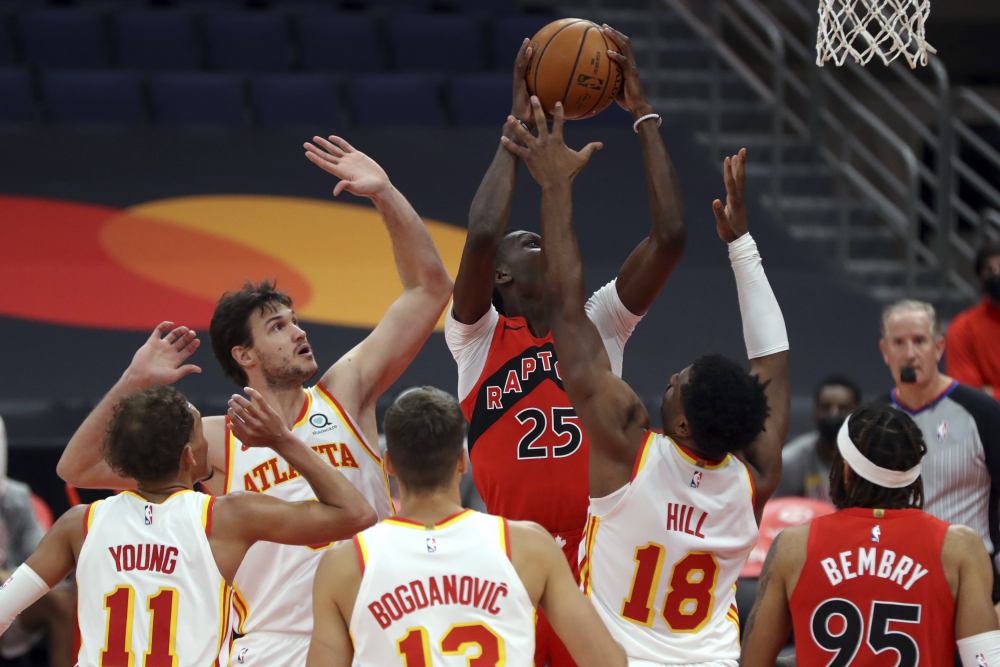Typically, the best way to draft a list of possible sellers in advance of the NBA trade deadline is to start at the bottom of the standings and work your way up to the fringes of the playoff chase.
But that tried-and-true method doesn’t cast a very wide net this year, in light of a new postseason format that features a play-in round and an expanded 20-team field. The Minnesota Timberwolves and Houston Rockets look dead in the water in the West. The Detroit Pistons and Orlando Magic are bringing up the rear in the East. Everyone else has started the second half of the season with a shot at reaching the play-in round.

The play-in tournament was instituted during the bubble at Disney World to help drum up early buzz after a four-month layoff. It was expanded this season to discourage tanking and to inject excitement into the stretch run of a condensed schedule that has seen games played in mostly empty buildings. Once the regular season is complete, each conference’s seventh seed will play the eighth seed, with the winner claiming the seventh seed. The ninth seed will play the 10th seed, with the loser eliminated. The loser of the seventh-vs.-eighth game will play the winner of the ninth-vs.-10th game. That winner will advance to the playoffs as the eighth seed, while the loser will go home.
Now comes the test: Will this lowering of the bar succeed in encouraging losing teams to prioritize a playoff chase at the March 25 trade deadline? Entering Monday, six teams were outside the play-in picture but still within striking distance: the Toronto Raptors, Washington Wizards, Cleveland Cavaliers, New Orleans Pelicans, Oklahoma City Thunder and Sacramento Kings.
The math has changed substantially for this group. Take the Kings, who at 15-23 are the West’s 13th seed. They are 5.5 games back of the No. 8 seed Dallas Mavericks (20-17) but only 3.5 games back of the No. 10 seed Memphis Grizzlies (17-18). In a normal season, Sacramento could have looked at its atrocious defense, concluded that it had no shot of catching Dallas and pulled the plug. This year, a hot two-week stretch like the one they enjoyed in late January and early February could get them into play-in position.
Washington faces a similar dynamic. An extended covid-19 battle cost the Wizards nearly two weeks of games in January, and an abysmal start threatened to revive Bradley Beal trade rumors and hot seat talk for Coach Scott Brooks. Yet the Wizards (14-23) are just 3 games out of the play-in picture despite holding the East’s 12th seed, and a late-season push up to 10th would amount to measured progress after lottery trips in the last two seasons. Without the play-in, Washington would be 4 games back of the eighth seed and need to climb past four teams in the standings, a much tougher proposition.
None of these six teams appears poised for a dramatic teardown, in part because reaching the play-in would represent a real achievement for many of them. Sacramento has parted ways with 10 coaches since it last reached the playoffs in 2006, and even a consolation prize sounds good after a stretch like that. Washington’s veterans, including Beal and Russell Westbrook, would have something to show for a tough campaign, and younger players like Rui Hachimura and Deni Avdija would get a taste of playing games that matter.
Toronto has reason to believe it can make a second-half push, given that less proven teams like the Charlotte Hornets, New York Knicks, Atlanta Hawks and Chicago Bulls are above them in the standings. Cleveland, which is years into a rebuilding effort, has overachieved this year and might prefer to ride that momentum as far as possible. Oklahoma City and New Orleans, though, are both earlier in their rebuilding cycles and have been aggressive in accumulating draft assets.
The NBA’s decision to flatten its draft lottery odds could also convince some of these teams to remain in the mix. Selling aggressively at the deadline to chase ping-pong balls now only gives the league’s worst team a 14 percent shot at the top pick, down from 25 percent as recently as 2018. Finishing with the fifth-worst record offers a 10.5 percent chance at winning the No. 1 pick, not much better than the 3 percent shot for finishing with the 10th-worst mark.
That said, there have some been indications that teams in this group are potential sellers. The rebuilding-minded Thunder traded promising forward Hamidou Diallo to the Detroit Pistons on Saturday, and they have started 19-year-old forward Aleksej Pokusevski since the midseason break. The Cavaliers shut down Andre Drummond in February to pursue a trade or buyout, replacing him at center with Jarrett Allen. And Lonzo Ball and JJ Redick trade rumors have swirled around the Pelicans for much of what has been an inconsistent and disappointing season.
It will take more than a wave of veteran buyouts to produce true deadline fireworks. Toronto’s Kyle Lowry, Sacramento’s Harrison Barnes, Oklahoma City’s Al Horford, New Orleans’ Ball and Cleveland’s Larry Nance Jr. are all capable of helping playoff teams, but a short supply of quality veterans could drive up asking prices or create market stagnation.
Good luck, aspiring contenders with rotation holes to fill. Landing a meaningful midseason boost is looking extra tricky this year.
Comments are no longer available on this story